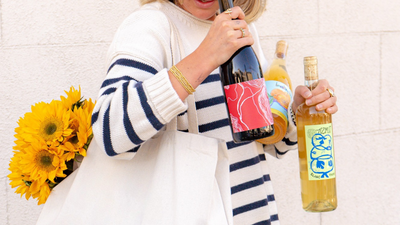Last month we visited the “heel of the boot”; this time we are going to the “toe of the boot”. While Puglia is a big flat plain, Calabria on other hand has a rich orography formed by mountains and hills, with plains comprising just 9% of its topography. The coastline is mostly composed of rocky cliffs that end directly at the sea, but Calabria also features a few of the most beautiful beaches in Italy, such as Diamante, Pizzo Calabro and Praia a Mare, on the western side. Formed by five provinces - Cosenza, Crotone, Catanzaro (the capital), Vibo Valenzia and Reggio Calabria - the region is surrounded on the east, south and west side by the waters of Ionian and Tyrrhenian Sea, while the north borders the Basilicata region. The Appeninean range that crosses Italy lengthwise ends in Calabria - some of its peaks reach above 2000 meters (around 6600 feet) - and the mountain areas have a continental climate, with rain and snowfall even in the warm seasons. Along the coasts, the weather is typically Mediterranean, with mild winters and warm temperatures the rest of the year; in the summer the thermometer can sometimes reach 110 F. Calabria doesn’t have as important an enological presence with consumers as some other Italian regions, although its wine has been a part of daily life before the first Greek settlements. As a matter of fact, the Greeks called this part of Italy Enotria (land of wine - Enos means wine in Greek), but due to the geographic configuration of the territory, the production and consumption of the wine was until recently limited to local families and villages. The region currently has only nine D.O.C. designations and no D.O.C.G. classifications. Today, thanks to improved agriculture knowledge and a new generation of farmers, things are starting to change and Calabrian wine is no longer an obscure object on the wine store shelf. Here are two proofs of this new enological reality.
Elio Longobardi, Italian Wine Specialist PlumpJack Wine & Spirits – Noe Valley
Malaspina, Micah, Greco Bianco Calabria IGT 2017
About the Winery: We visited this winery in a previous IWC segment. Consolato Malaspina started this family business in 1967 when regional wine production was still minimal. Consolato could see the potential in the area though, and invested in improvements in the vineyard and the cellar. Today, his four daughters Domenica, Caterina, Irene and Patrizia are running the winery, with Consolato still at the helm as winemaker. The estate is located at the extreme tip of the region, up in the hills where the eastern side of Sicily and Mt. Etna's volcano are visible on clear days. There is no noise other than the wind that brings the perfumes of the Mediterranean bushes and saltiness from the sea.
About the Winemaking: Micah is 100% Greco Bianco, an indigenous grape of the region. As the name suggests, most likely this is an ancient grape brought over by the first Greeks settlers. The harvest is made manually during the first weeks of September. The wine is soft-pressed and ferments in steel tanks for twelve days, before spending five months on the lees prior to bottling.
Tasting Notes: Warm golden color in the glass. Intense floral and fruity notes, yellow peaches, pineapple and dried herbs. Dry and harmonious with a long finish on the palate.
Cataldo Calabretta Viticoltore, Cirò Rosso Classico Superiore D.O.C. 2016
About the Winery: After studying enology and viticulture at the Agrarian University in Milan, Cataldo gained experience working with several wineries around Italy for few years. Then in 2008, he and his sisters, Maria and Michela, decided to refurbish the family’s old wine cellars and became the fourth generation of farmers to work their family's land in Crotone, in the countryside around Cirò Marina. The Cirò Rosso Classico Superiore by Cataldo Calabretta is absolutely the most representative wine of this new reality of Calabria. It is made from Gaglioppo, the representative grape of the region and the most planted in Cataldo’s estate. The name is derived from a Greek word meaning “beautiful foot”, for the florid and plump shape of the bunches.
About the Winemaking: For over 10 years the estate has been run according to the principles of organic farming, an ethical choice, which is paying off year after year, according to Cataldo: “In the last decade we replanted our vineyards while continuing to grow the grape variety Gaglioppo, bush trained on a hilly land. We use the old practice of baring the roots with a plow manually and fertilizing the land with the field bean manure. We do not use selected yeasts or activators for fermentation of any kind. In addition, we try to minimize the use of sulfites. In the cellar, we renewed an old cement vat, which is excellent for the ageing of Cirò wine.”
Tasting Notes: The color is of red garnet. The nose offer notes of dark cherry , violet and licorice, and a whiff of dried Calabrian pepper. To the taste the fruit is balanced by a warm, earthy dryness. Drink now or cellar for another couple of years




